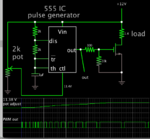i200yrs
Full Member level 2
Hello All again...we have a halogen lamp rated 12V, 100W (with fixed power supply input). Let say we want only to power up 50% (like 50W), is ok to add resistor in series? From ohms law that halogen lamp draw 8.3A. So if i want limit to 4.15A, how to calculate the resistor value? Any expert please help...thanks in advance.
